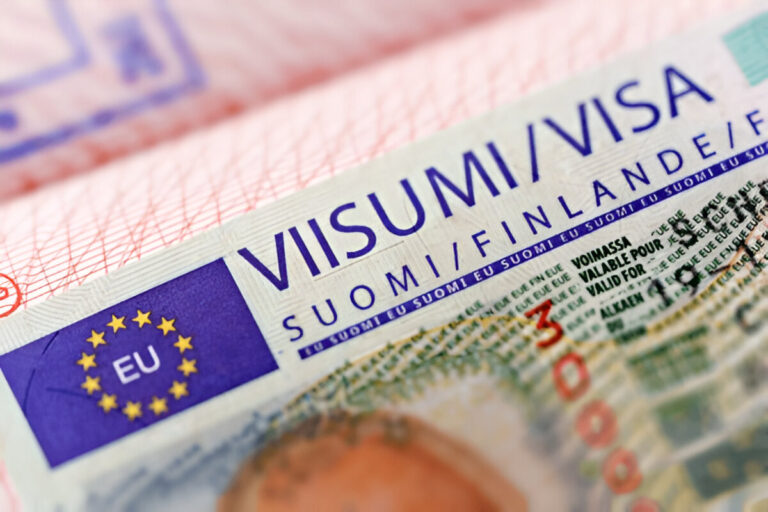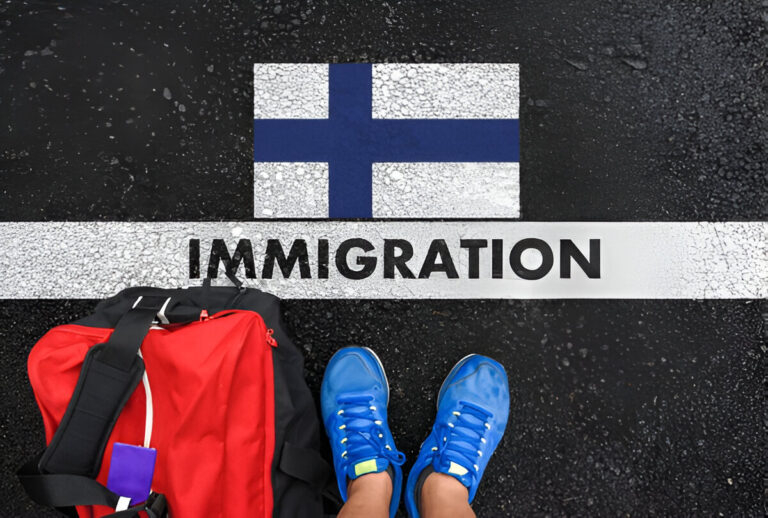Australia Express Visa for Immigrants – Visa Sponsorship in Australia
Are you dreaming of starting a new life in the vibrant landscapes of Australia? You’re not alone. Every year, thousands of skilled professionals and their families make the life-changing decision to migrate to the country.
What is the Australia Express Visa?
The Australia Express Visa, commonly referred to as the Express Entry system, is a priority immigration pathway introduced by the Australian government to attract skilled workers. Designed to expedite the visa application process, the Express Visa aims to fill skill shortages in various sectors by offering a faster route to permanent residency for eligible candidates.
Unlike traditional visa processes that can take months or even years, the Express Visa streamlines the application by focusing on candidates with the highest potential to contribute to Australia’s economy. This system not only accelerates the processing time but also enhances the overall efficiency of the immigration process.
Types of Express Visas Available
Australia offers several visa categories under the Express Visa umbrella, each tailored to specific skill sets and professional backgrounds. The primary types include:
- Skilled Independent Visa (Subclass 189):
- Description: For skilled workers not sponsored by an employer, state, or family member.
- Eligibility: Points-tested based on age, education, work experience, and English proficiency.
- Skilled Nominated Visa (Subclass 190):
- Description: Requires nomination by an Australian state or territory.
- Eligibility: Similar to Subclass 189 but with additional points for state nomination.
- Skilled Work Regional (Provisional) Visa (Subclass 491):
- Description: For skilled workers willing to live and work in regional Australia.
- Eligibility: Requires nomination by a state or sponsorship by an eligible family member in a regional area.
- Employer Nomination Scheme (Subclass 186):
- Description: For skilled workers nominated by their employer for permanent residency.
- Eligibility: Must have an Australian employer willing to sponsor you.
- Temporary Skill Shortage Visa (Subclass 482):
- Description: Allows employers to address labor shortages by bringing in skilled workers.
- Eligibility: Employer sponsorship required, with the visa lasting up to four years.
Each visa type caters to different professional profiles and circumstances, providing flexibility for applicants to choose the pathway that best aligns with their career goals and personal situations.
Benefits of an Express Visa
Opting for an Express Visa comes with a myriad of advantages that make the immigration process smoother and more efficient:
- Faster Processing Times: Applications are prioritized, with many processed within a few months.
- Pathway to Permanent Residency: Most Express Visas lead directly to permanent residency, offering long-term stability.
- Comprehensive Eligibility Assessment: The points-based system ensures that only qualified candidates with in-demand skills are selected.
- Flexibility in Job Opportunities: Access to a broad range of employment sectors across Australia.
- Family Inclusion: Possibility to include family members in the application, ensuring the whole family can migrate together.
- Access to Healthcare and Education: Permanent residents enjoy Australia’s robust healthcare system and quality education facilities.
These benefits not only expedite the immigration process but also enhance the overall quality of life for new immigrants, making Australia an attractive destination for skilled professionals worldwide.
Eligibility Criteria for Express Visa
Meeting the eligibility criteria is paramount to securing an Australia Express Visa. The assessment primarily revolves around the points-based system, which evaluates applicants based on various factors:
1. Age
- Maximum Points: 30 points for applicants aged between 25 and 32.
- Points decrease progressively for ages below 25 and above 32.
2. English Language Proficiency
- Maximum Points: 20 points.
- Assessment: Through standardized tests like IELTS, TOEFL, or PTE.
- Higher scores in English proficiency tests yield more points.
3. Educational Qualifications
- Maximum Points: 20 points.
- Requirements: Recognized Australian degrees, diplomas, or vocational qualifications.
- Additional points for higher education degrees like Master’s or Ph.D.
4. Work Experience
- Maximum Points: 15 points.
- Criteria: Relevant skilled employment both in Australia and overseas.
- More points for longer and more recent work experience.
5. Australian Qualifications or Study Requirements
- Maximum Points: 5 points.
- Criteria: Completing a degree, diploma, or trade qualification in Australia.
6. Specialist Education Qualification
- Maximum Points: 10 points.
- Criteria: A Ph.D. in a field like engineering, medical science, or information technology.
7. Credentialed Community Language
- Maximum Points: 5 points.
- Criteria: Accreditation in community language skills by the National Accreditation Authority for Translators and Interpreters (NAATI).
8. Study in Regional Australia
- Maximum Points: 5 points.
- Criteria: Completing at least two academic years of study in regional Australia.
9. Partner Skills
- Maximum Points: 10 points.
- Criteria: Having a partner with relevant skills, English proficiency, and qualifications.
10. Nomination by State or Territory
- Additional Points: Up to 15 points.
- Criteria: State or territory government nomination based on regional needs.
11. Sponsorship by Family Member
- Additional Points: Up to 15 points.
- Criteria: Having a family member eligible to sponsor your application.
Applicants must accumulate a minimum number of points (typically 65) to be eligible for consideration. However, higher scores increase the chances of receiving an invitation to apply for the visa.
Visa Sponsorship in Australia: What You Need to Know
Visa sponsorship is a critical component of Australia’s immigration framework, especially for those applying under employer-sponsored visas like the Employer Nomination Scheme (Subclass 186) or the Temporary Skill Shortage Visa (Subclass 482). Understanding the sponsorship process is essential to ensure a successful application.
What is Visa Sponsorship?
Visa sponsorship involves an Australian employer or an eligible family member formally supporting an applicant’s visa application. This sponsorship signifies that the sponsor is willing to take responsibility for the visa holder, ensuring they meet specific criteria set by the Australian Department of Home Affairs.
Types of Sponsorship
- Employer Sponsorship:
- Description: Australian employers nominate skilled workers to fill specific positions.
- Requirements: The employer must demonstrate that the position cannot be filled by the local workforce and meet salary and working conditions standards.
- State or Territory Sponsorship:
- Description: State governments nominate applicants to address regional skill shortages.
- Requirements: Applicants must commit to living and working in the nominated state or territory for a specified period.
- Family Sponsorship:
- Description: Eligible family members can sponsor applicants for certain visa categories.
- Requirements: Sponsors must meet income and residency criteria, ensuring they can support the applicant.
Responsibilities of Sponsors
- Compliance with Australian Laws: Sponsors must adhere to all relevant employment and immigration laws.
- Financial Support: In some cases, sponsors may need to provide financial support to the visa holder.
- Reporting Obligations: Sponsors are required to report any changes in the visa holder’s employment or personal circumstances to the authorities.
- Supporting Documentation: Providing necessary documentation to substantiate the sponsorship claim.
Benefits of Sponsorship
- Enhanced Application Chances: Sponsored applications often receive priority processing.
- Employer Commitment: Demonstrates a clear pathway for employment and residency.
- Access to Additional Points: State or family sponsorship can contribute additional points to the applicant’s score.
Understanding the dynamics of visa sponsorship can significantly enhance your chances of a successful immigration journey to Australia.
The Visa Sponsorship Process
Navigating the visa sponsorship process involves several structured steps. Here’s a detailed breakdown to guide you through each phase:
1. Determine Eligibility
- Assess Your Qualifications: Ensure your skills and qualifications align with the visa category you’re targeting.
- Employer Requirements: If seeking employer sponsorship, verify that the employer is registered and eligible to sponsor overseas workers.
2. Secure a Sponsor
- Employer Sponsorship:
- Job Offer: Obtain a genuine job offer from an Australian employer.
- Employer Nomination: The employer must nominate you for a specific position.
- State or Territory Sponsorship:
- Expression of Interest (EOI): Submit an EOI indicating your desire to be sponsored by a particular state.
- State Nomination: Await nomination based on state-specific criteria and skill shortages.
- Family Sponsorship:
- Eligibility Check: Ensure the sponsoring family member meets all requirements.
- Formal Sponsorship Application: The family member must submit a sponsorship application on your behalf.
3. Submit Your Visa Application
- Gather Documentation: Collect all necessary documents, including proof of qualifications, work experience, English proficiency, and sponsorship details.
- Complete Application Forms: Fill out the relevant visa application forms accurately.
- Pay Fees: Ensure payment of all required visa application fees.
4. Await Processing
- Processing Times: Vary based on visa type, application completeness, and the current backlog.
- Respond to Requests: Be prepared to provide additional information or attend interviews if requested by the Department of Home Affairs.
5. Receive Decision
- Approval: If successful, you’ll receive a visa grant notification outlining the conditions and validity.
- Refusal: In case of refusal, review the reasons provided and consider reapplying or seeking professional assistance.
6. Arrive in Australia
- Entry and Settlement: Once your visa is granted, make necessary arrangements for relocation and settlement in Australia.
Tips for a Smooth Sponsorship Process
- Accurate Information: Ensure all information provided is truthful and accurate.
- Timely Responses: Respond promptly to any requests from the Department of Home Affairs.
- Professional Assistance: Consider consulting a registered migration agent to navigate complex scenarios.
Understanding each step of the sponsorship process can demystify the journey and increase your chances of a successful visa application.
How to Secure a Sponsor in Australia
Securing a sponsor is often the linchpin in obtaining an Australia Express Visa, especially for employer-sponsored visas. Here’s a strategic approach to enhancing your chances of finding a sponsor:
1. Identify Target Industries and Employers
- Research In-Demand Skills: Focus on industries experiencing skill shortages, such as healthcare, information technology, engineering, and construction.
- Top Employers: Target reputable companies known for sponsoring international talent, such as multinational corporations and established Australian firms.
2. Tailor Your Resume and Cover Letter
- Australian Standards: Format your resume according to Australian norms, emphasizing relevant skills and experiences.
- Highlight Skills: Clearly showcase how your expertise aligns with the employer’s needs.
- Personalize Applications: Customize your cover letter for each application, demonstrating genuine interest in the role and the company.
3. Leverage Professional Networks
- LinkedIn: Optimize your LinkedIn profile, connect with industry professionals, and engage in relevant groups.
- Networking Events: Attend virtual or in-person industry seminars, webinars, and conferences to meet potential employers.
- Professional Associations: Join Australian professional bodies related to your field to access exclusive job boards and networking opportunities.
4. Utilize Recruitment Agencies
- Specialized Agencies: Partner with agencies that specialize in international placements and employer sponsorships.
- Register and Engage: Submit your resume, attend interviews, and maintain regular communication with recruiters to stay informed about opportunities.
5. Enhance Your Qualifications
- Certifications: Obtain additional certifications recognized in Australia to bolster your credentials.
- Language Proficiency: Achieve high scores in English proficiency tests to make your profile more attractive.
- Local Experience: If possible, gain experience in Australian settings through internships or remote collaborations.
6. Prepare for Interviews
- Cultural Fit: Understand Australian workplace culture and demonstrate how you can seamlessly integrate.
- Skill Demonstration: Be prepared to showcase your skills through practical examples and problem-solving scenarios relevant to the role.
7. Stay Persistent and Patient
- Regular Applications: Consistently apply to relevant job openings and follow up on applications.
- Feedback Utilization: Seek feedback on unsuccessful applications to improve future submissions.
- Stay Informed: Keep abreast of changes in immigration policies and employer sponsorship programs to adapt your strategy accordingly.
By proactively seeking out sponsorship opportunities and presenting a compelling case to potential employers, you can significantly enhance your prospects of securing a sponsor in Australia.
Timeline and Processing Times
Understanding the timeline and processing times associated with the Australia Express Visa is crucial for effective planning and setting realistic expectations. Here’s an overview to help you navigate the journey:
1. Expression of Interest (EOI) Submission
- Timeframe: Immediate upon completion.
- Process: Submit an EOI through the SkillSelect platform, detailing your qualifications, skills, and sponsorship preferences.
2. Invitation to Apply (ITA)
- Timeframe: Varies based on rank and visa category.
- Frequency: Regular draws occur, inviting top-ranked candidates to apply.
- Outcome: Receive an ITA to proceed with the visa application.
3. Visa Application Submission
- Timeframe: Within 60 days of receiving an ITA.
- Process: Compile and submit all required documentation, ensuring completeness and accuracy.
4. Application Processing
- Skilled Independent Visa (Subclass 189): Typically processed within 6 months.
- Skilled Nominated Visa (Subclass 190): Around 7 months.
- Skilled Work Regional Visa (Subclass 491): Approximately 8 months.
- Employer Nomination Scheme (Subclass 186): Varies, generally 6-12 months.
- Temporary Skill Shortage Visa (Subclass 482): Processing times range from 2 to 8 months based on stream and occupation.
5. Decision and Notification
- Timeframe: Post-assessment, usually aligned with processing times.
- Outcome: Receive a decision via email or through the online portal.
6. Visa Grant and Travel
- Timeframe: Upon approval.
- Action: Make travel arrangements and comply with any pre-departure requirements.
Factors Influencing Processing Times
- Completeness of Application: Incomplete applications can lead to delays.
- Documentation Quality: Clear, well-organized documents expedite assessment.
- Security and Health Checks: Timely completion of mandatory checks influences processing speed.
- Volume of Applications: High application volumes can extend processing periods.
- Changes in Immigration Policies: Policy shifts may impact processing efficiencies.
Tips to Expedite Processing
- Submit Complete Applications: Ensure all sections are thoroughly filled and documentation is provided.
- Respond Promptly: Address any requests for additional information without delay.
- Engage Professionals: Consider hiring a registered migration agent to navigate complex scenarios efficiently.
- Stay Informed: Monitor application status and stay updated on any procedural changes.
Conclusion
The Australia Express Visa offers a promising and efficient pathway for skilled immigrants seeking to establish their lives in one of the world’s most dynamic and diverse countries. With its streamlined processes, emphasis on in-demand skills, and various sponsorship opportunities, the Express Visa system is tailored to attract talent that contributes to Australia’s economic growth and societal well-being.
However, the journey requires careful planning, a thorough understanding of eligibility criteria, and strategic execution. By staying informed, seeking professional guidance, and proactively addressing potential challenges, you can significantly enhance your chances of securing an Express Visa and realizing your Australian dream.




